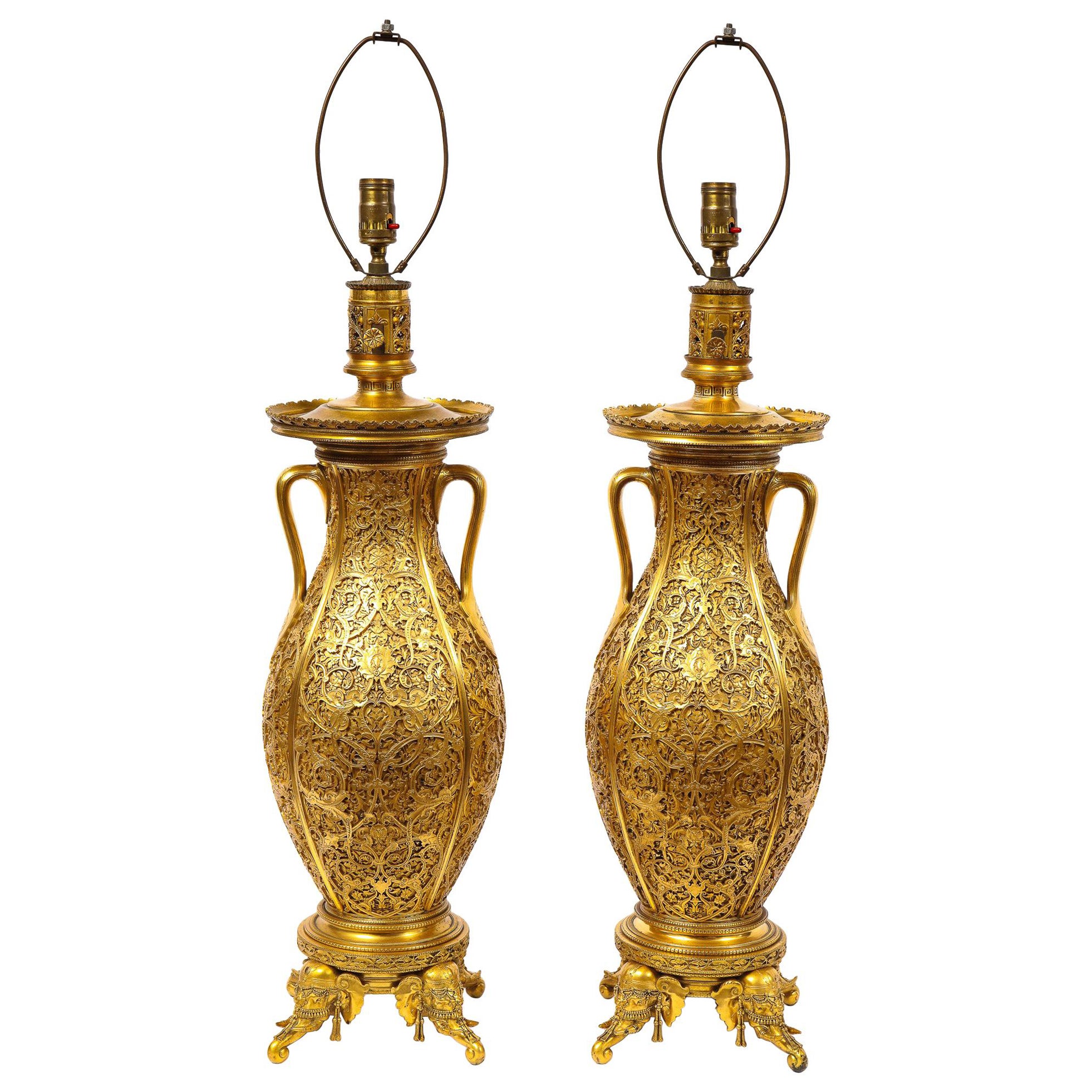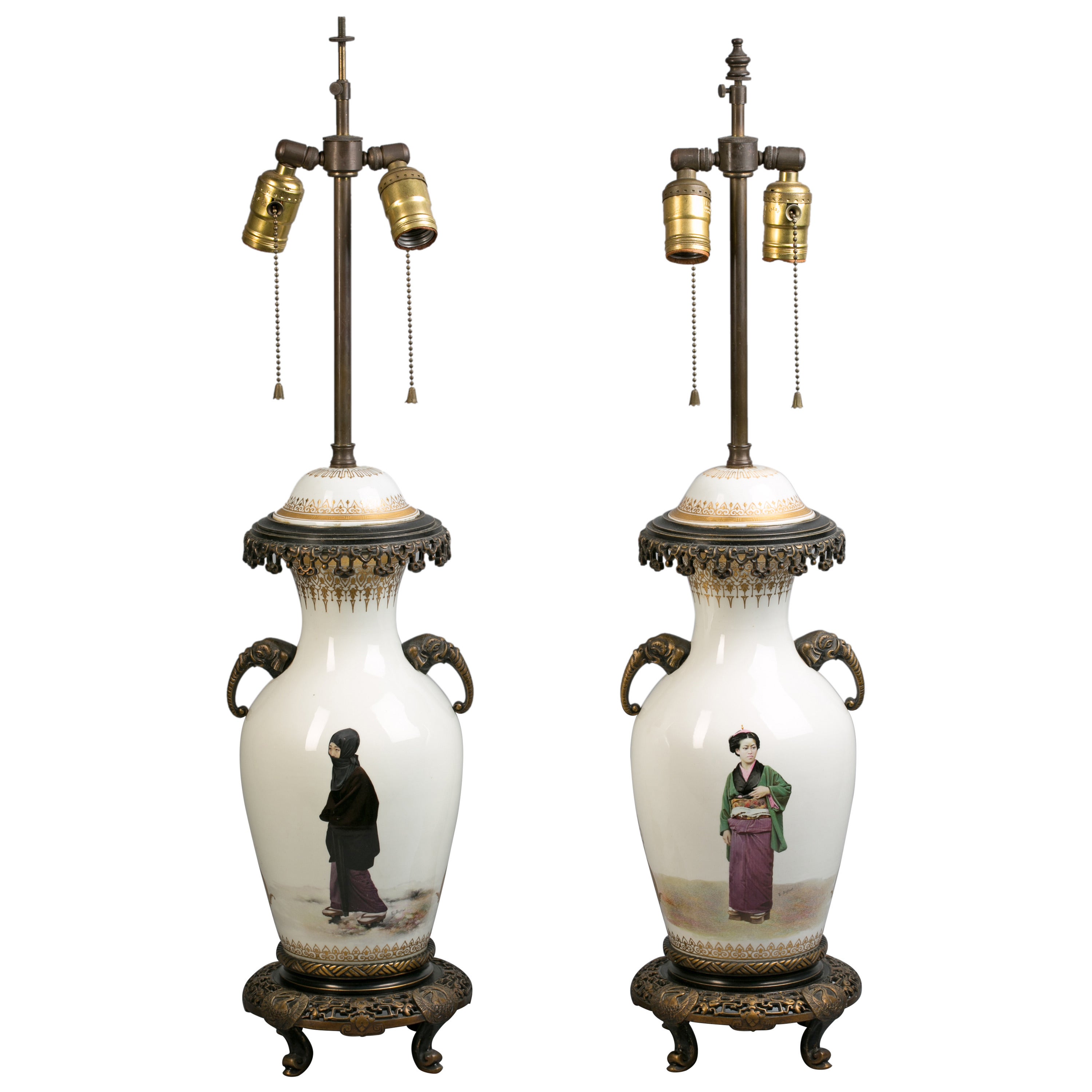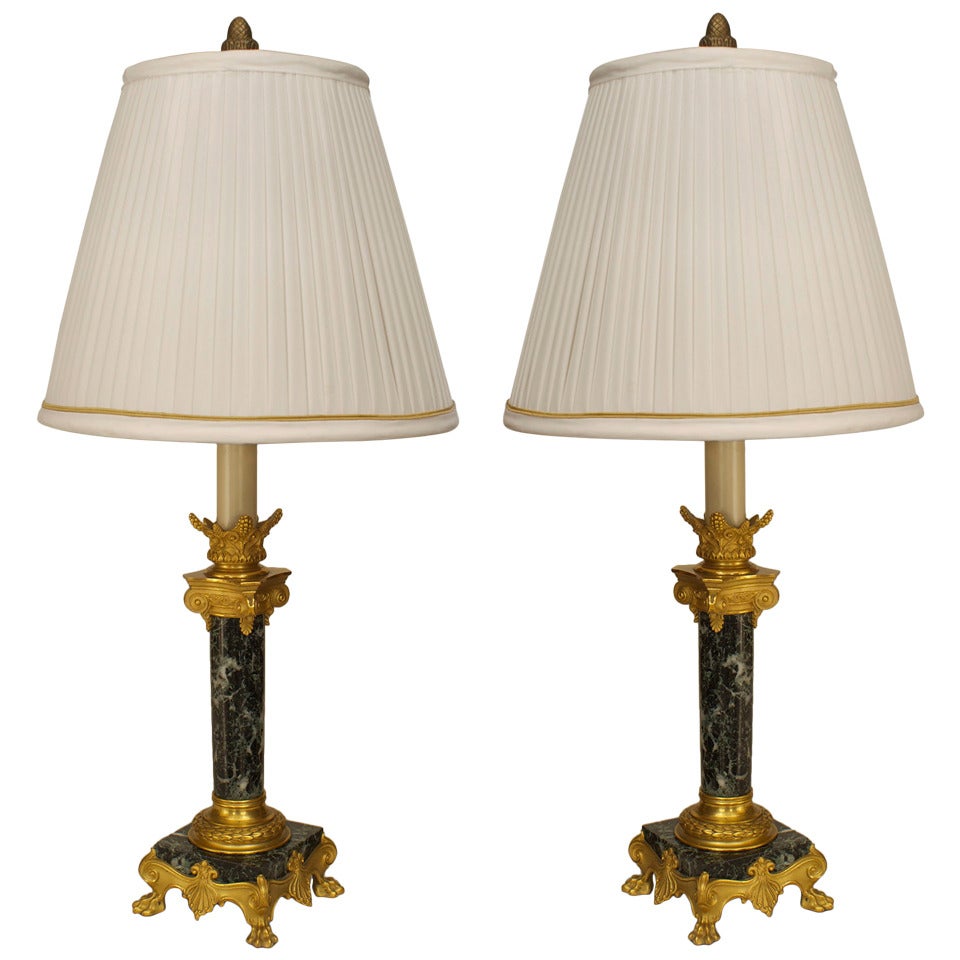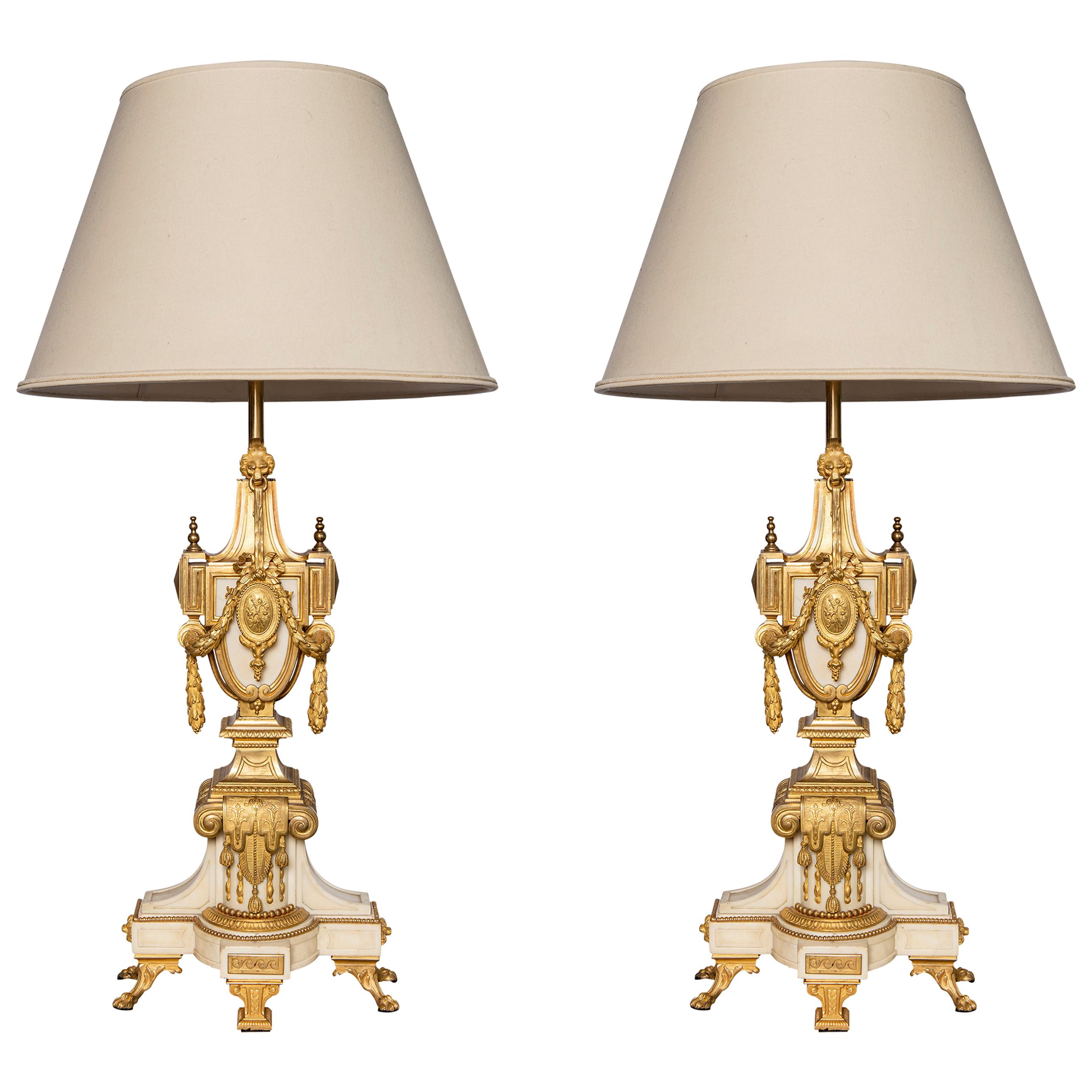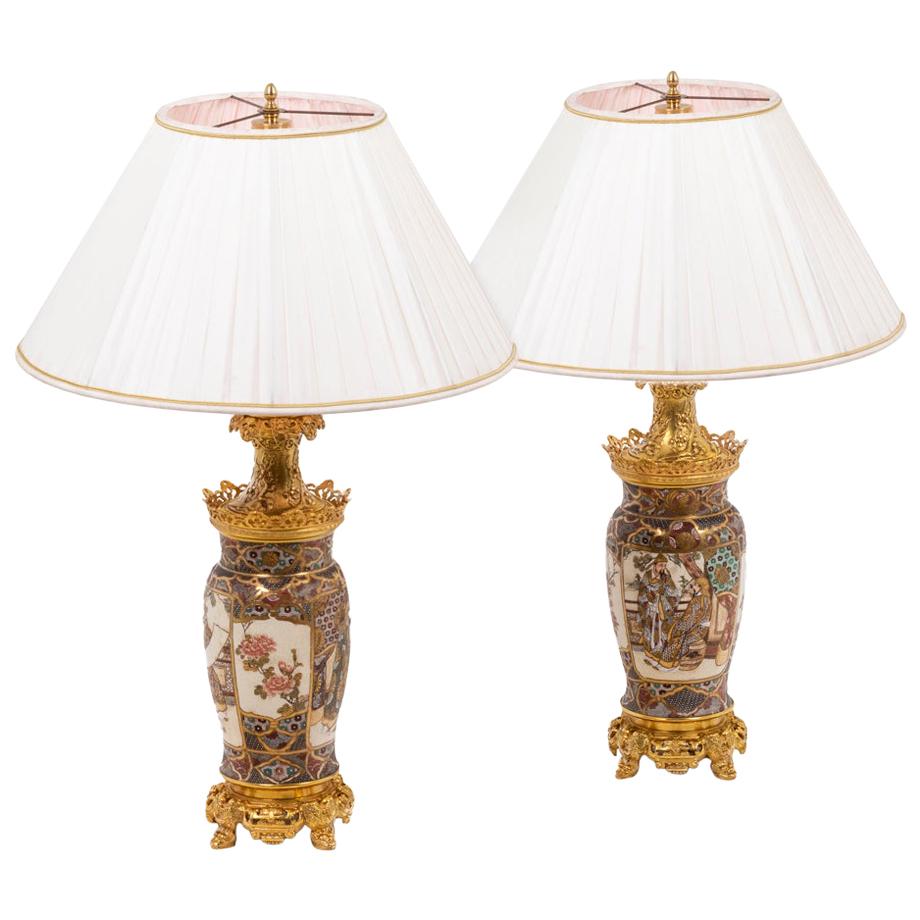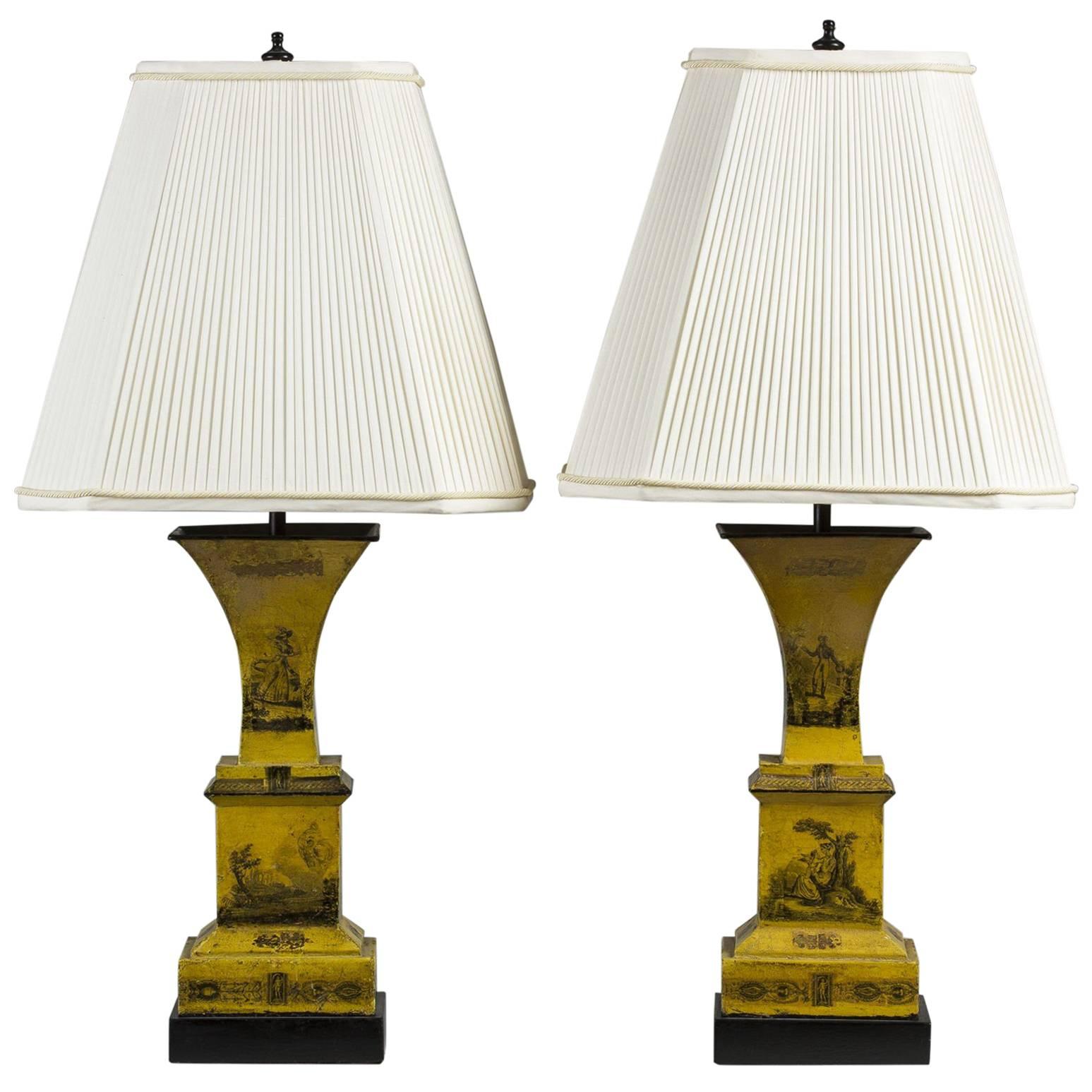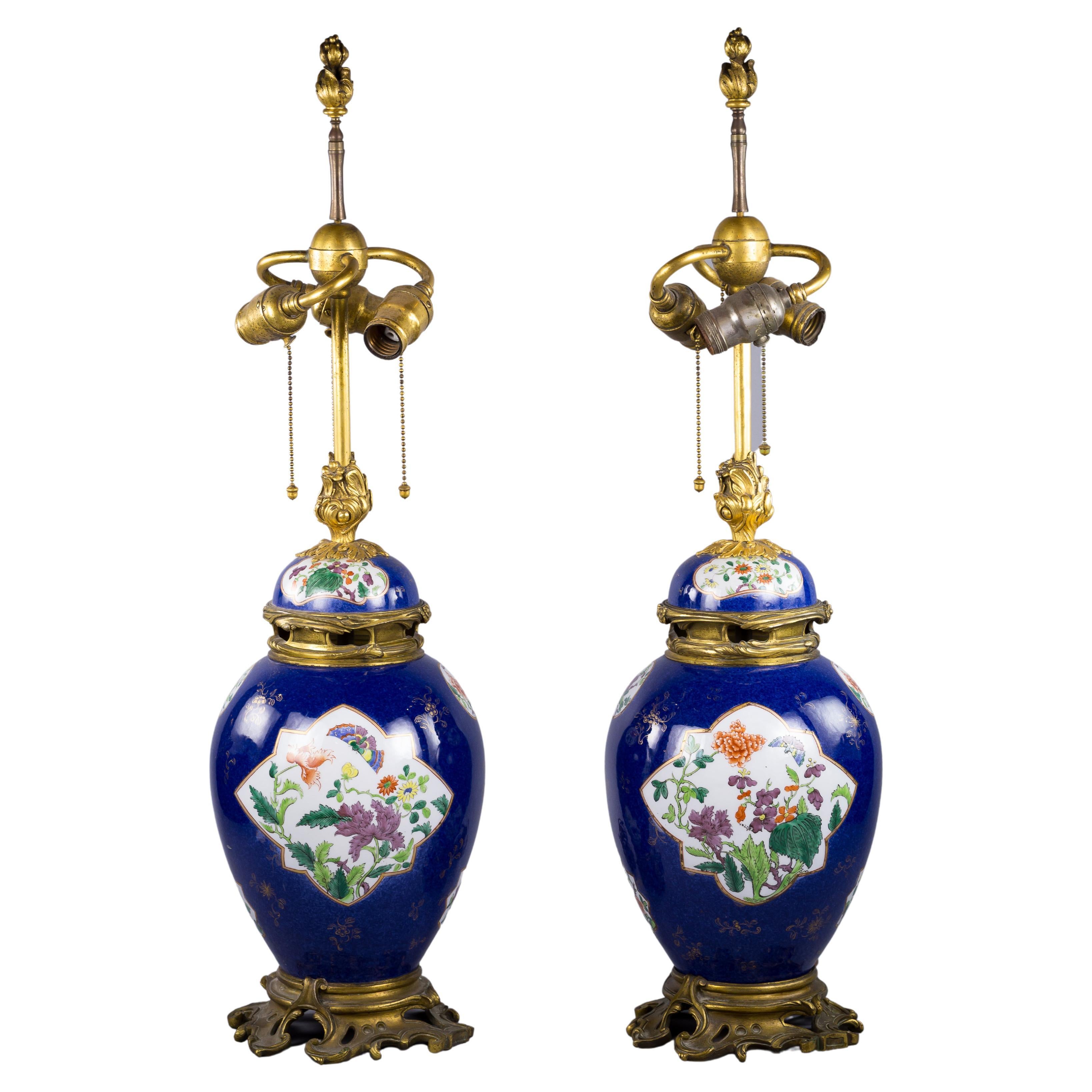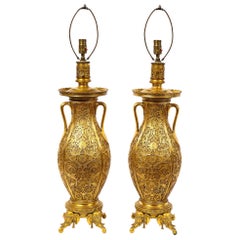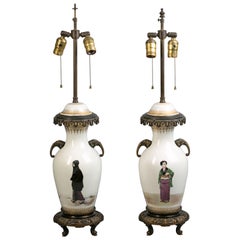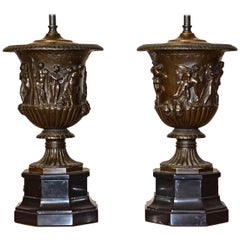
A pair of cloisonné oil lamps, Barbedienne mounted circa 1880
View Similar Items
1 of 8
A pair of cloisonné oil lamps, Barbedienne mounted circa 1880
About the Item
- Creator:F. Barbedienne Foundry (Workshop/Studio)
- Dimensions:Height: 29.93 in (76 cm)Diameter: 9.06 in (23 cm)
- Sold As:Set of 2
- Style:Japonisme (Of the Period)
- Materials and Techniques:Bronze,Cloissoné
- Place of Origin:
- Period:
- Date of Manufacture:circa 1880
- Condition:Wear consistent with age and use. The lamps recently have been cleaned; the gilding is brighter than depicted in the photographs.
- Seller Location:Amsterdam, NL
- Reference Number:Seller: 1041stDibs: LU9945936342
You May Also Like
- Pair of French Japonisme Ormolu Vases E. Lièvre, Executed by F. BarbedienneBy Ferdinand Barbedienne, Edouard LievreLocated in New York, NYAn important and monumental pair of very fine 19th century French Japonisme/Orientalist ormolu vases designed by Edouard Lièvre and Executed by Ferdinand Barbedienne. Each body with an oval shape, finely sculpted in a floral design, fringed by orientalist style handles with cartouches, the neck surmounted by a circular pierced scrolling dragon frieze. Each vase resting on a group of four orientalist style jeweled elephant...Category
Antique 1870s French Japonisme Vases
MaterialsBronze
- Pair of Bronze-Mounted French Porcelain Lamps, circa 1885Located in New York, NYPair of bronze-mounted French porcelain covered vases mounted as lamps, circa 1885. Signed Eugene Sieffert. The elephant handles are bronze.Category
Antique 1880s Table Lamps
MaterialsBronze
- Pair of Barbedienne Bronze Medici Urn LampsBy F. Barbedienne FoundryLocated in Palm Springs, CAA wonderful pair of bronze Medici urns on black stone bases. Bronzes with high relief by Bardedienne, stamped on lower edge. Rewired with new double cluster sockets in patinated bron...Category
Antique 19th Century French Neoclassical Revival Table Lamps
MaterialsBronze
$6,500 / set - Rare Pair of Cloisonné Vases Mounted as LampsLocated in Palm Springs, CAA pair of late 19th century cloisonné vases loose mounted on new painted wooden plinths and French wired with new sockets. Very much in the style of Billy Haines. 16" High to the t...Category
Antique 19th Century Chinese Hollywood Regency Table Lamps
MaterialsMetal
$4,070 / set - Pair of French Empire Green Marble Barbedienne Table LampsBy F. Barbedienne FoundryLocated in New York, NYPair of French Empire style (19th Century) green marble column candlestick lamps with bronze dore trimmed capital and square base (signed F. BARBEDIENNE) (PRICED AS Pair).Category
Antique 19th Century French Empire Table Lamps
MaterialsMarble, Bronze
- Pair of Porcelain Vases Ormolu-Mounted in Lamps by Gagneau Paris XIXth CenturyBy Gagneau ParisLocated in Saint-Ouen, FRPair of large Japanese Porcelain Cone Shape Vases with Imari decoration Important mounts in ormolu and gilded metal, the base decorated with a laurel wreath, the upper part of falling leaves and a frieze of knotted ribbon. The mounts signed Gagneau, 115 R. Lafayette. Circa 1860 With their original aluminium bulb cover and original gilding Vase it self Height 47 cm The Gagneau Company is one of the most famous lighting factories in Paris in the nine-teenth century, established in 1800 at 25 rue d'Enghien in Paris and later at 115 rue de Lafayette. She has participated in many exhibitions throughout this century. She began in 1819 with the Exposition des Produits de l'Industrie and later participated in the Universal Exhibitions where she was part of the jury in the category of art bronzes (class 25) at the Universal Exhibition in Paris in 1889. "Imari" was simply the trans-shipment port for Arita wares, from where they went to the for-eign trading outposts at Nagasaki. It was the kilns at Arita which formed the heart of the Japanese porcelain industry. Arita's kilns were set up in the 17th century, after kaolin was discovered in 1616. A popular legend attributes the discovery to an immigrant Korean potter, Yi Sam-Pyeong (1579–1655), although most historians consider this doubtful. After the discovery, some kilns began to produce revised Korean-style blue and white porcelains, known as Early Imari, or "Shoki-Imari". In the mid-17th century, there were also many Chinese refugees in northern Kyushu due to the turmoil in China, and it is said that one of them brought the overglaze enamel coloring technique to Arita. Thus Shoki-Imari developed into Ko-Kutani, Imari, and later Kakiemon, which are sometimes taken as a wider group of Imari wares. Ko-Kutani was produced around 1650 for both export and domestic market.Kutani Ware is characterized by vivid green, blue, purple, yellow and red colors in bold designs of landscapes and nature. Blue and white porcelain pieces continued to be produced and they are called Ai-Kutani. Ko-Kutani Imari for the export market usually adopted Chinese design structure such as kraak style, whereas Ai-Kutani for the domestic market were highly unique in design and are ac-cordingly valued very much among collectors. Ko-Kutani style evolved into Kakiemon-style Imari, which was produced for about 50 years around 1700. Kakiemon was characterized by crisp lines, and bright blue, red and green designs of dramatically stylized floral and bird scenes. Imari achieved its technical and aes-thetic peak in the Kakiemon style, and it dominated the European market. Blue and white Kakiemon is called Ai-Kakiemon. The Kakiemon style transformed into Kinrande in the 18th century, using underglaze blue and overglaze red and gold enamels, and later additional colors. Imari began to be exported to Europe when the Chinese kilns at Jingdezhen were damaged in the political chaos and the new Qing dynasty government halted trade in 1656–1684. Ex-ports to Europe were made through the Dutch East India Company, and in Europe the des-ignation "Imari porcelain" connotes Arita wares of mostly Kinrande Imari. Export of Imari to Europe stopped in mid-18th century when China resumed export to Eu-rope, since Imari was not able to compete against Chinese products due to high labor costs. By that time, however, both Imari and Kakiemon styles were already so popular among Eu-ropeans that the Chinese export porcelain copied both, a type known as Chinese Imari. At the same time, European kilns, such as Meissen and English potteries such as Johnson Bros. and (Royal) Crown Derby, also imitated the Imari and Kakiemon styles. Export of Imari surged again in late 19th century (Meiji era) when Japonism flourished in Europe.Thus, in the western world today, two kinds of true Japanese Imari can...Category
Antique 1880s French Japonisme Table Lamps
MaterialsBronze
$8,387 Sale Price / set30% Off
Recently Viewed
View AllMore Ways To Browse
Pair French Oil Lamps
19th Century Japanese Vase Lamps
Dragon Ornament
Mounted Warrior
Antique Dragon Lamp
Cloisonne Lamps
Cloisonne Lamp
Japanese Pair Lamps Vase
Pair Oriental Lamps
Oriental Pair Of Lamps
Antique Oriental Lamps
Oriental Lamps Antique
Antique Oriental Lamp
Antique Lamps Oriental
Cloisonne Dragon
Pair Cloisonne 19th Century Vase
Oriental Style Lamp
Japanese Oil Lamp
